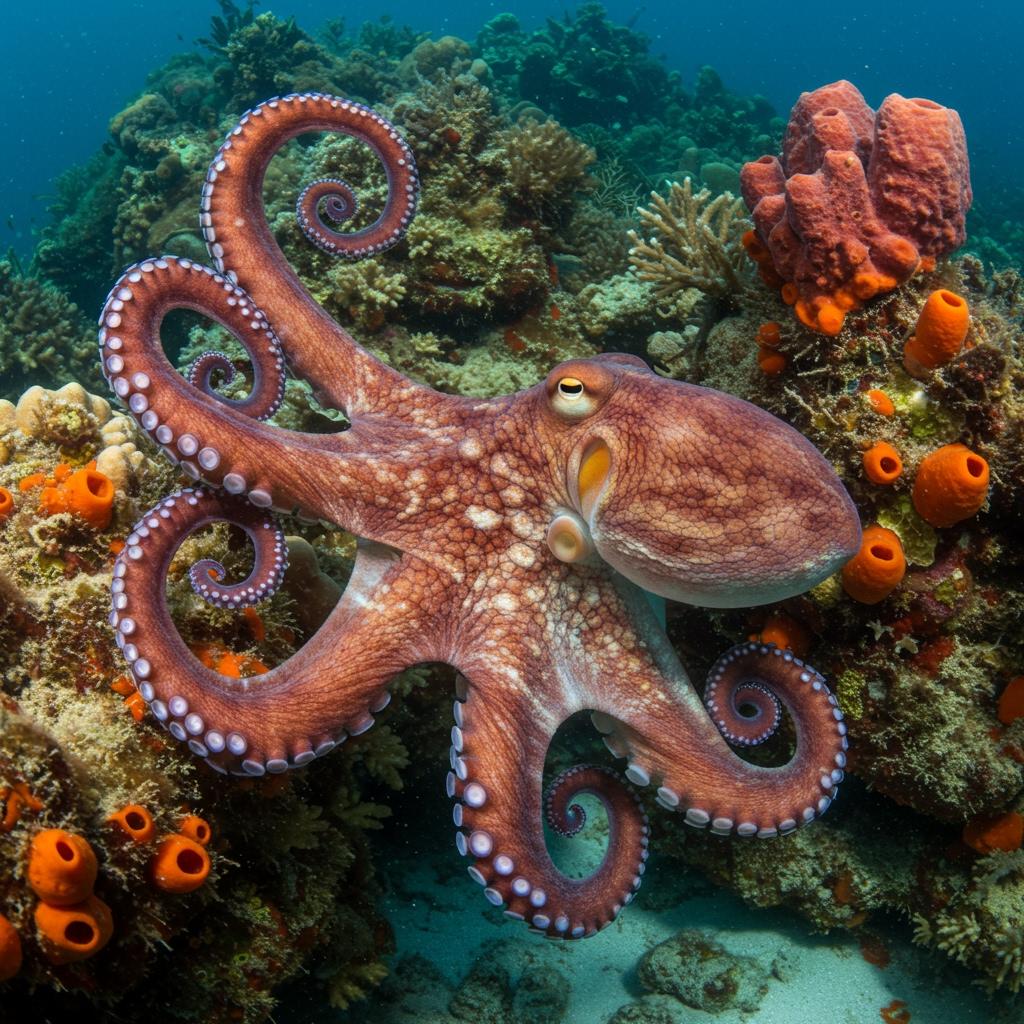Why Octopuses Might Be the Closest Thing to Aliens on Earth
 The octopus’s incredible camouflage and unique body make it look almost alien — but its true mystery lies beneath the surface.
The octopus’s incredible camouflage and unique body make it look almost alien — but its true mystery lies beneath the surface.
Why Octopuses Might Be the Closest Thing to Aliens on Earth
What makes these sea creatures so strange and fascinating?
By Peter Teoh, Science Writer
Have you ever looked at an octopus and thought, “This creature seems like it came from outer space”? You’re not alone. Octopuses have baffled scientists and inspired sci-fi writers because they look and behave in ways that seem completely different from other animals on Earth. Let’s dive into the ocean’s depths to explore why octopuses might just be the closest thing we have to aliens right here on our planet.
The Alien-Like Features of Octopuses
Octopuses are not just weird-looking sea animals; they have several traits that make them truly extraordinary:
1. A Brain Like No Other
Octopuses have the largest brain-to-body ratio of any invertebrate—the animals without backbones—and their brains are incredibly complex. But here’s the twist: most of their neurons (the cells that send messages in the nervous system) aren’t in their central brain. Instead, they live inside each of their eight arms! This means each arm can think and act independently, almost like it has its own mini-brain. Imagine if your fingers could solve puzzles or grab snacks without your brain telling them what to do![2][5]
2. Masters of Disguise
Have you ever seen an octopus vanish into the background? They can instantly change their skin color, pattern, and even texture to blend perfectly with rocks, sand, or coral. This camouflage is controlled by special skin cells called chromatophores, which act like tiny color-changing pixels. This ability helps them avoid predators and sneak up on prey, but it also looks like something from a sci-fi movie![3]
3. Flexible, Alien Bodies
Unlike most animals, octopuses don’t have bones. Their soft, squishy bodies can squeeze through tiny cracks and holes much smaller than their size. This flexibility lets them explore hidden places and escape danger quickly. Their arms are covered with suckers that can taste and touch independently, giving them a super-sensory experience of the world.[3][7]
4. Intelligent and Tool-Using
Octopuses are incredibly smart. They can solve puzzles, open jars, and even use tools—like carrying coconut shells to hide inside or wielding poisonous tentacles from other sea creatures as weapons. Some species even hunt cooperatively with fish, showing a level of social intelligence rare in invertebrates.[2]
5. A Mysterious Evolutionary History
Here’s where things get really interesting. Octopuses belong to a group called cephalopods, which evolved separately from vertebrates (animals with backbones like us). Their evolutionary path is so unique and sudden in the fossil record that some scientists have suggested their complex genetic makeup might have an extraterrestrial origin—maybe genes delivered to Earth by comets or asteroids! This idea, called “panspermia,” is highly controversial and not widely accepted, but it shows just how alien octopuses seem compared to other life forms.[1][4][6]
Why Scientists Are Fascinated
Scientists like Dominic Sivitilli, a researcher in astrobiology and psychology, study octopuses to imagine what alien intelligence might look like. Since octopuses evolved intelligence completely independently from humans, they offer a glimpse into how smart life could develop under very different conditions—like on other planets. Instead of a centralized brain, their distributed intelligence is an entirely different way to think and interact with the world.[5]
Though we don’t have any evidence that octopuses are truly aliens, their strange biology challenges our ideas about what life can be. They remind us that evolution can create creatures so different from us that they almost seem like visitors from another world.
What’s Next?
Scientists continue to study octopus brains, genetics, behavior, and their amazing abilities. Each new discovery uncovers more about how these fascinating creatures live and think. Whether they came from Earth or beyond, octopuses inspire us to look deeper and wonder about the incredible diversity of life.
Side Notes
-
Octopus plural: The correct plural is “octopuses” or “octopodes,” never “octopi.”
-
Panspermia: A hypothesis that life, or genetic material, might have arrived on Earth from space.
-
Chromatophores: Color-changing skin cells that allow octopuses to camouflage instantly.
-
Distributed intelligence: When an animal’s nervous system is spread throughout its body, not just concentrated in the brain.
Trending Sidebar
-
Paul the Octopus: Became famous for predicting World Cup soccer match results.
-
Octopus tool use: Some octopuses carry coconut shells or other objects for shelter.
-
Alien intelligence models: Researchers use octopuses to imagine how life might evolve on other planets.
-
Cephalopod genome: Sequenced in 2015, revealing complex and unique genetic features.
-
Octopus camouflage: Studied to inspire new materials that change color.
Next time you see an octopus, remember—you’re looking at a creature that might be the closest thing to an alien living right here in Earth’s oceans!